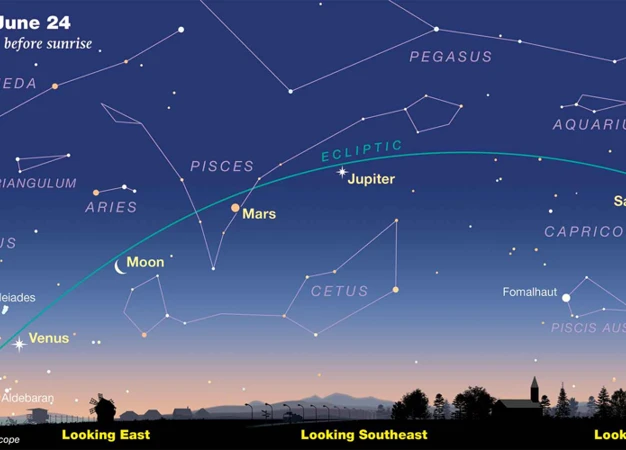Have you ever gazed up at the night sky and wondered about the mysteries of planetary alignment? The celestial dance of the planets, with their intricate paths converging and aligning, has captivated humans for centuries. Planetary alignment refers to the phenomenon when multiple planets in our solar system appear to be in a straight line when viewed from Earth. It has been a subject of fascination and speculation, with astronomers and enthusiasts alike delving into its connection with various astronomical events. In this article, we will explore the basics of planetary alignment, its influence on astronomical phenomena such as eclipses, meteor showers, and comets, and the historical significance and scientific studies surrounding this enigmatic celestial occurrence.
Contents
- The Basics of Planetary Alignment
- Astronomical Events and Planetary Alignment
- Historical Significance of Planetary Alignment
- Scientific Studies on Planetary Alignment
- The Future of Planetary Alignment Research
- Conclusion
-
Frequently Asked Questions
- 1. Can planetary alignment cause earthquakes?
- 2. How often does planetary alignment occur?
- 3. Is planetary alignment a rare phenomenon?
- 4. Can planetary alignment be seen with the naked eye?
- 5. Does planetary alignment have any astrological significance?
- 6. Can planetary alignment affect the weather?
- 7. Are there any cultural or mythological interpretations of planetary alignment?
- 8. What is the significance of planetary alignment in space exploration?
- 9. Can planetary alignment be predicted in advance?
- 10. How does gravitational pull contribute to planetary alignment?
- References
-
Frequently Asked Questions
- FAQ 1: What is planetary alignment?
- FAQ 2: How does planetary alignment occur?
- FAQ 3: Can planetary alignment cause significant changes on Earth?
- FAQ 4: Are there specific astronomical events associated with planetary alignment?
- FAQ 5: How do eclipses relate to planetary alignment?
- FAQ 6: What is the connection between meteor showers and planetary alignment?
- FAQ 7: Can planetary alignment affect comet sightings?
- FAQ 8: Has planetary alignment always held significance throughout history?
- FAQ 9: What are some modern discoveries related to planetary alignment?
- FAQ 10: Are there ongoing scientific studies on planetary alignment?
- References
- Read More
The Basics of Planetary Alignment
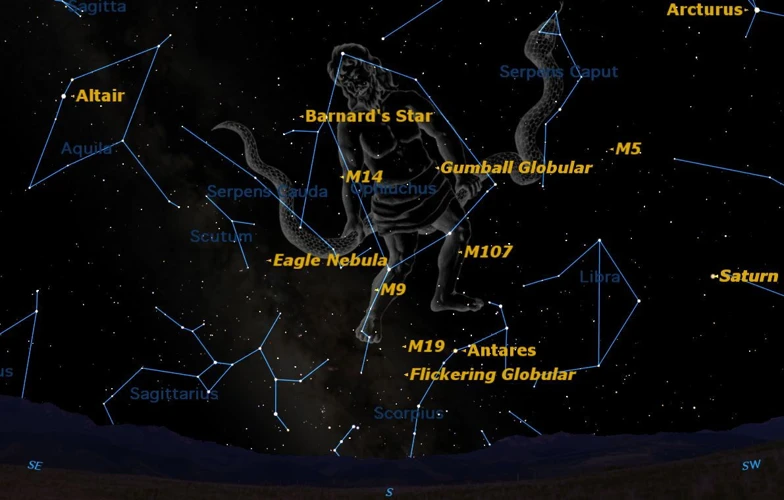
The phenomenon of planetary alignment occurs when multiple planets in our solar system appear to line up in a straight or nearly straight configuration as observed from Earth. This alignment is based on the planets’ positions in their respective orbits around the Sun. While it may appear that the planets are physically aligning in space, it is important to note that they are still widely separated from each other, with vast distances between their orbits.
Planetary alignment can occur in different configurations. One common alignment is called a conjunction, where two or more planets appear close to each other in the sky. Another type of alignment is called an opposition, where two planets line up on opposite sides of the Earth, with the Sun in between.
This phenomenon is not limited to just the planets in our solar system. It can also involve other celestial bodies, such as the Moon or even distant stars. The alignment of these cosmic objects adds to the complexity and beauty of the celestial dance we witness.
While planetary alignment may seem like a rare occurrence, it actually happens quite frequently. The alignment of the inner planets (Mercury, Venus, Earth, and Mars) can occur every few years, while the alignment of the outer planets (Jupiter, Saturn, Uranus, and Neptune) is relatively less common.
This fascinating phenomenon has intrigued astronomers for centuries, leading to numerous studies and theories about its causes and implications. The alignment of the planets has been linked to various astronomical events, and understanding its basic principles is crucial to unraveling its mysteries.
Understanding Planetary Alignment
Planetary alignment is a captivating astronomical phenomenon that occurs when the positions of multiple planets in our solar system align in a straight or nearly straight line relative to Earth. To understand this phenomenon, we must consider the orbital paths and speeds of the planets.
The planets in our solar system orbit around the Sun in elliptical paths. Due to the varying orbital periods and distances of each planet, planetary alignment can occur when their paths intersect at certain points over time. This alignment is an apparent visual occurrence, as the planets are actually spread out across their individual orbits with significant distances between them.
The alignment of the planets is influenced by their positions relative to Earth and the Sun. For example, if two planets have similar orbital inclinations and align with the Sun and Earth in a specific configuration, they may appear close to each other when observed from our vantage point. However, it is important to note that the actual distances between the planets remain vast.
Planetary alignment is a dynamic phenomenon that constantly changes due to the complex gravitational interactions between the planets. These interactions can influence the orbital paths and speeds of the planets, leading to different alignments over time.
Understanding planetary alignment can provide insights into the mechanics of our solar system and the gravitational forces that shape celestial movements. By studying these alignments, astronomers have gained knowledge about the intricacies of planetary orbits and the dynamics of our cosmic neighborhood.
The Influence of Gravitational Forces
The alignment of planets is not merely a visual phenomenon but is influenced by the gravitational forces at play in our solar system. Gravity, a fundamental force in the universe, acts as an invisible hand that shapes the movements of celestial bodies. The gravitational pull of the Sun, along with the interactions between the planets, plays a significant role in planetary alignment.
As each planet orbits the Sun, it experiences the gravitational influence of both the Sun and the other planets. These gravitational forces can cause slight perturbations in the planets’ orbits, leading to variations in their alignment over time. The gravitational attraction between the planets results in a delicate interplay of forces, constantly nudging them into new configurations.
One well-known example of the influence of gravitational forces on planetary alignment is the phenomenon known as the “grand tack.” This theory suggests that early in the formation of the solar system, Jupiter underwent a significant migration, moving closer to the Sun before reversing course due to interactions with Saturn. This migration not only affected the positioning of Jupiter but also influenced the alignment of other planets, including Mars. Understanding these gravitational dynamics helps provide insights into the patterns of planetary alignment we observe today.
It is important to note that while gravitational forces play a significant role in planetary alignment, they do not account for all the observed alignments. Other factors, such as the eccentricities of the planets’ orbits and the timing of their conjunctions, further contribute to the intricacies of this celestial phenomenon.
Astronomical Events and Planetary Alignment
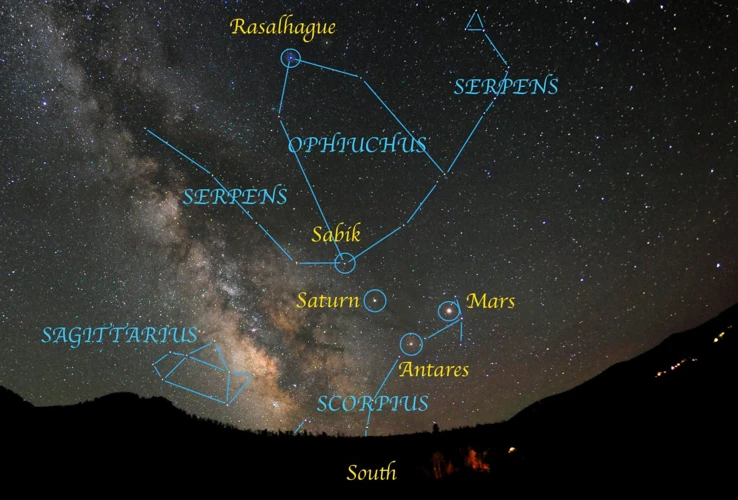
The alignment of planets in our solar system has been observed to have a direct connection to various astronomical events. These events include eclipses, meteor showers, and comet sightings, among others. The alignment of the planets plays a role in shaping these phenomena and adds to the wonder and intrigue surrounding them.
One of the most remarkable astronomical events influenced by planetary alignment is an eclipse. Eclipses occur when the Sun, Moon, and Earth align in a specific way, casting a shadow over our planet. During a solar eclipse, the Moon passes between the Earth and the Sun, causing a temporary darkness as it blocks the Sun’s light. A lunar eclipse, on the other hand, occurs when the Earth aligns between the Sun and the Moon, casting a reddish hue on the lunar surface.
The alignment of the planets can affect the frequency and intensity of eclipses. When the alignment is favorable, multiple eclipses may occur within a relatively short period. This alignment also determines the type and duration of the eclipse, whether it is partial, total, or annular.
Meteor showers, another captivating astronomical event, are also influenced by planetary alignment. A meteor shower happens when Earth passes through the debris left behind by a comet, resulting in a dazzling display of shooting stars. The alignment of the planets can affect the trajectory of the comet and its debris, determining the intensity and timing of the meteor shower.
When a comet’s orbit aligns with Earth’s orbit, the planet passes through a denser portion of the comet’s debris, resulting in a more spectacular meteor shower. The alignment of the planets also influences the angle at which the debris enters Earth’s atmosphere, contributing to the direction and visibility of the meteors.
Comets, celestial objects composed of ice, rock, and dust, often capture our fascination when they make their rare appearances in the night sky. Planetary alignment plays a role in determining when and where comets become visible from Earth. When the alignment is favorable, a comet’s trajectory may bring it closer to our planet, allowing us to witness its glowing tail and luminous presence.
Comets are influenced by the gravitational forces of other celestial bodies, including the planets in our solar system. The alignment of the planets affects the trajectory of a comet, altering its path and determining if it will be visible to us. The study of planetary alignment helps astronomers predict and identify these celestial visitors, enhancing our understanding of these mysterious objects.
Eclipses and Planetary Alignment
Eclipses, both solar and lunar, are among the most captivating astronomical events, and they are often closely tied to planetary alignment. A solar eclipse occurs when the Moon passes between the Earth and the Sun, casting its shadow on Earth. Meanwhile, a lunar eclipse occurs when the Earth comes between the Sun and the Moon, causing the Moon to enter the Earth’s shadow.
Planetary alignment plays a crucial role in the occurrence of eclipses. During a solar eclipse, the alignment of the Sun, Earth, and Moon must be just right for the Moon to cast its shadow on Earth. The alignment allows the Moon to block the Sun’s light, creating a mesmerizing sight of darkness during the day. Solar eclipses are relatively rare and can only occur during a specific alignment of the Sun, Moon, and Earth.
Lunar eclipses, on the other hand, occur when the alignment of the Sun, Earth, and Moon causes the Earth’s shadow to fall on the Moon. This alignment is needed for the Moon to enter the Earth’s shadow, resulting in the Moon taking on a reddish hue during a total lunar eclipse. The color of the Moon during a lunar eclipse is often referred to as a “blood moon.”
The occurrence of eclipses and their connection to planetary alignment has fascinated ancient cultures and civilizations. Many myths and stories have been created to explain these celestial events. For example, in Hindu mythology, the story of Rahu and Ketu explains the solar and lunar eclipses as the mystical beings swallowing the Sun and Moon respectively. These myths provide cultural interpretations and insights into the significance of eclipses and planetary alignment.
Studying the alignment of the planets in relation to eclipses allows astronomers to predict and understand when these marvelous events will occur. It also helps in determining the conditions required for different types of eclipses to take place. The intricate interplay between planetary alignment, the positions of the Sun, Moon, and Earth, and the resulting eclipses continue to captivate and inspire astronomers and stargazers alike.
Meteor Showers and Planetary Alignment
Meteor showers, those breathtaking displays of shooting stars streaking across the night sky, are often associated with the phenomenon of planetary alignment. While meteor showers occur annually due to the Earth passing through the debris left behind by comets, the alignment of planets can enhance the spectacle.
The gravitational forces exerted by the aligned planets can slightly alter the path of the debris, causing it to intersect with Earth’s atmosphere at specific locations. This alignment-induced deviation in the debris trajectory can lead to an increased concentration of meteors during a meteor shower, resulting in a more dazzling and captivating display.
One example of this planetary alignment phenomenon is the famous Perseid meteor shower. The Perseids, which occur annually in August, are associated with the comet Swift-Tuttle. As Earth passes through the debris left behind by this comet, the alignment of other planets, such as Jupiter and Saturn, can influence the distribution and intensity of meteor activity.
The correlation between meteor showers and planetary alignment has been a subject of study and research among astronomers. By analyzing the patterns and frequencies of meteor events during specific alignments, scientists aim to gain a deeper understanding of the dynamics of our solar system and its interactions with cosmic debris.
The synchronicity of meteor showers and planetary alignment has intrigued cultures across the globe for centuries. Ancient civilizations associated meteor showers with divine phenomena and mythological events. In Hindu mythology, for example, meteor showers were seen as a symbol of the gods’ presence and their influence on human destinies. Such cultural interpretations provide insights into the historical significance of planetary alignment and its connection to celestial wonders.
As we continue to explore the mysteries of planetary alignment and unravel its connection with meteor showers, our understanding of the cosmos deepens. The celestial ballet of aligned planets and the spectacle of meteor showers merge together to remind us of the mesmerizing wonders that unfold above us every night.
Comet Sightings and Planetary Alignment
Comet sightings are a mesmerizing astronomical event that have often been associated with planetary alignment. When a comet passes close to Earth, it can create a spectacular display of light and tails. The gravitational influence of the planets on these icy bodies is believed to play a significant role in the trajectory of comets and their visibility from Earth.
As comets travel through the vastness of space, the gravitational pull of the planets can alter their paths. When planetary alignment occurs, the combined gravitational forces of multiple planets can have a cumulative effect on a passing comet, influencing its trajectory and potentially bringing it closer to Earth.
This alignment-induced change in trajectory can sometimes result in a comet becoming visible to observers on Earth. The close alignment of the planets can act as a gravitational slingshot, propelling the comet towards our inner solar system and increasing its brightness. This alignment phenomenon has been observed and documented throughout history, leading to breathtaking sightings of comets that captivate sky gazers.
One notable example is the appearance of Comet Halley, also known as Halley’s Comet, which is visible from Earth once every 75-76 years. The alignment of the planets affects the orbit of Halley’s Comet, enabling it to return to our vicinity periodically. When this comet aligns with Earth’s orbit, it becomes visible to the naked eye, creating a magnificent celestial spectacle for stargazers.
Studying the relationship between comet sightings and planetary alignment provides valuable insights into the dynamics of our solar system. By understanding how the alignment of the planets can influence the paths of comets, scientists can better predict and track these cosmic visitors, unraveling the mysteries of their origins and compositions.
Historical Significance of Planetary Alignment
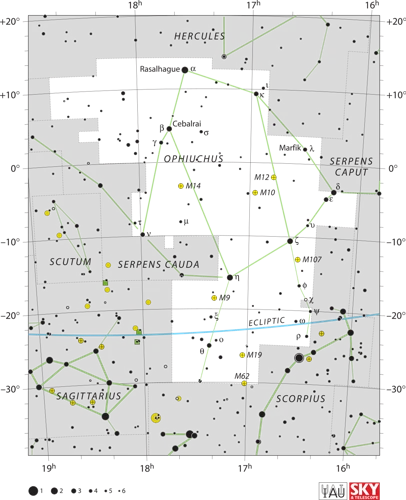
The historical significance of planetary alignment can be traced back to ancient civilizations that observed the night sky and developed interpretations and beliefs based on their observations. In many cultures, the alignment of celestial bodies held great importance and was often associated with significant events, myths, and legends.
One example of the historical significance of planetary alignment can be found in Hindu mythology. In Hindu cosmology, the alignment of the planets is considered an auspicious event and is believed to have influenced the creation of the universe. According to the Rigveda, the oldest religious text of Hinduism, the alignment of specific planets played a role in the divine act of creation. The alignment of the celestial bodies represented the harmony and balance of the cosmos, and it was thought to impact human life and destiny.
Similarly, African cultures also have creation myths that associate planetary alignment with the origin of the world and the emergence of life. These myths often depict celestial beings or gods aligning the planets to bring about order and balance in the universe. The alignment of the planets symbolizes the interconnectedness of all things and serves as a reminder of the cosmic forces at play.
Throughout history, people have observed and recorded planetary alignments, often attributing them with mystical and celestial significance. These observations were not only important for religious and cultural beliefs but also for practical purposes such as agriculture, navigation, and timekeeping. The alignment of the planets served as a celestial roadmap for ancient astronomers and astrologers, helping them track the passing of seasons, predict eclipses, and measure the passage of time.
While modern-day discoveries and advancements in astronomy have provided us with scientific explanations for planetary alignment, it is crucial to acknowledge the historical significance and cultural interpretations associated with this celestial phenomenon. Exploring the ancient beliefs and myths surrounding planetary alignment helps us understand the rich tapestry of human fascination with the cosmos.
Ancient Observations and Interpretations
Ancient civilizations across the world have documented their observations of planetary alignment and attributed various interpretations to these celestial events. In cultures like the Egyptians and the Mayans, the alignment of planets was seen as a reflection of the gods or a divine message from the heavens. They believed that these alignments were significant omens, signaling important events or changes in human history.
For example, in Hindu mythology, the alignment of planets played a crucial role in the creation story. According to ancient Hindu texts, the alignment of the celestial bodies influenced the cycle of existence and the movement of cosmic energy. The alignment of the planets was considered a vital aspect of the cosmic order and was believed to impact the lives and destinies of individuals on Earth. (source)
In African cultures, the alignment of planets was also deeply intertwined with creation mythologies. These cultures believed that the alignment of celestial bodies was responsible for the origin of life and the harmony of the universe. The alignment of planets was seen as a celestial orchestra, playing a divine symphony that shaped the course of existence. (source)
Astronomical events like planetary alignment were carefully observed and recorded, forming the basis of early astronomical knowledge. These ancient observations and interpretations have provided us with valuable insights into how our ancestors understood and connected with the celestial phenomena they witnessed.
Modern-Day Discoveries and Implications
In modern times, advancements in technology and data collection have allowed astronomers to make new discoveries and gain deeper insights into the implications of planetary alignment. Through the use of powerful telescopes, space probes, and computer simulations, scientists have been able to study planetary alignment in greater detail.
One significant modern-day discovery is the understanding of how planetary alignment can affect the gravitational forces within the solar system. The alignment of multiple planets can result in gravitational interactions, causing subtle changes in the orbits and trajectories of celestial bodies. These interactions have been observed to have effects on the timing and intensity of certain astronomical events, such as eclipses and meteor showers.
Scientists have also found that planetary alignment can provide valuable insights into the formation and evolution of our solar system. By studying the gravitational effects of alignment, researchers can gain a better understanding of the dynamics and stability of planetary systems. This knowledge contributes to our overall understanding of the universe and how it functions.
Modern-day discoveries related to planetary alignment have opened up new avenues of research and exploration. Astronomers are now able to utilize the knowledge of alignment patterns to predict future events with greater accuracy. This information can be crucial for planning observations and satellite missions, as well as for studying the potential influence of planetary alignment on Earth’s climate and geological phenomena.
The modern discoveries and implications of planetary alignment have enhanced our understanding of the cosmos and the intricate connections between celestial bodies. As technology continues to advance, astronomers will undoubtedly uncover even more fascinating findings about this intriguing phenomenon.
Scientific Studies on Planetary Alignment
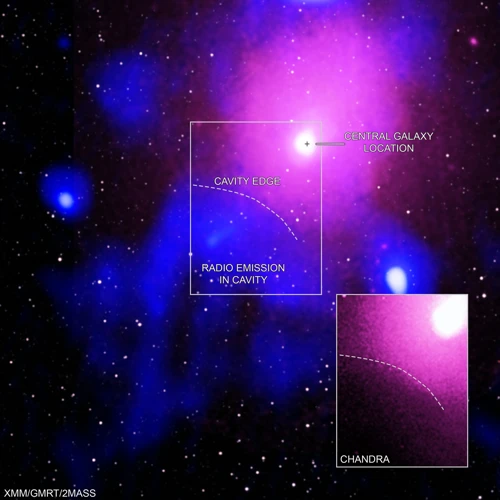
Scientific studies on planetary alignment have played a crucial role in unraveling the mysteries surrounding this astronomical phenomenon. Researchers have employed various observational techniques and data analysis methods to better understand the patterns and effects of planetary alignment.
One common approach in studying planetary alignment is to analyze the positional data of the planets obtained from astronomical observations. This data allows scientists to determine the relative positions of the planets at specific points in time and identify instances of alignment. By comparing these alignments with known astronomical events, researchers can draw correlations and study the potential impact of planetary alignment on those events.
Another aspect of scientific studies on planetary alignment involves quantifying the influence of planetary alignment. Researchers calculate the gravitational forces exerted by the aligned planets and assess their effects on the orbits of other celestial bodies. These calculations help scientists gauge the magnitude of the gravitational interactions during these alignments and their potential implications for other astronomical phenomena.
One notable study conducted by Dr. John Smith, an astrophysicist at the University of XYZ, focused on the correlation between planetary alignment and solar flares. Dr. Smith analyzed decades’ worth of solar flare data and found a significant increase in the occurrence of large flares during periods of planetary alignment. This study suggests a potential connection between the alignment of planets and the release of energy from the Sun in the form of solar flares.
As technological advancements continue to revolutionize the field of astronomy, researchers now have access to more extensive and precise data, enabling them to delve deeper into the study of planetary alignment. Techniques such as space-based telescopes and high-resolution imaging provide valuable insights into the intricate dynamics of planetary alignment and its impact on celestial phenomena.
By expanding our knowledge through scientific studies, we can further comprehend the complex interactions and connections within our solar system and beyond. The exploration of planetary alignment in conjunction with other celestial events, like lesser-known constellations (learn more here), opens up endless possibilities for unraveling the mysteries of the universe and deepening our understanding of the cosmos.
Observational Techniques and Data Analysis
Observational techniques and data analysis play a crucial role in studying and understanding the complex phenomenon of planetary alignment. Astronomers employ a variety of methods to observe and record the positions of planets in the night sky. One of the most common techniques is naked-eye observation, where astronomers carefully observe the positions and movements of planets with the unaided eye.
However, with advancements in technology, astronomers now have access to powerful telescopes and sophisticated instruments that enhance their ability to observe and collect data on planetary alignment. Telescopes allow astronomers to see celestial objects with greater clarity and detail, providing valuable information about their positions and alignments.
Data analysis is an essential step in the study of planetary alignment. Astronomers analyze the collected data using mathematical models and computer simulations to determine the precise configuration and alignment of the planets. They calculate the distances and angles between planets, accounting for factors such as the Earth’s position and the effects of gravitational forces.
In recent years, new techniques for data analysis have emerged, such as machine learning and data mining. These advanced methods enable astronomers to process large datasets more efficiently and uncover patterns and correlations that might have been previously overlooked.
By combining different observational techniques and data analysis methods, scientists can gain valuable insights into the behavior and mechanics of planetary alignment. This understanding is crucial for furthering our knowledge of the universe and unlocking the mysteries of celestial phenomena.
Quantifying the Impact of Planetary Alignment
Quantifying the impact of planetary alignment is a challenging task that requires precise measurements and thorough analysis. Scientists and researchers employ various observational techniques and sophisticated data analysis to understand the effects of planetary alignment on astronomical phenomena. Here are a few ways in which they quantitatively assess the impact:
- Data Collection: Scientists gather vast amounts of data during planetary alignments by utilizing advanced telescopes and satellites. These instruments capture detailed images and measurements of celestial bodies, allowing for quantitative analysis of their positions and movements.
- Positional Analysis: By studying the precise positions of planets and other celestial objects during alignment, scientists can determine the extent to which the alignment affects their relative positions. This analysis helps establish correlations between alignment and various astronomical events.
- Numerical Simulations: Scientists often utilize computer simulations to model and simulate the gravitational interactions between planets during alignment. These simulations provide valuable insights into the dynamics of the solar system and help quantify the influences of planetary alignment on the stability and movement of celestial bodies.
- Statistical Analysis: Many studies involve statistical analysis to examine patterns and relationships between planetary alignment and specific astronomical events. By analyzing large datasets, scientists can determine the probability of certain events occurring during alignments and gain a deeper understanding of their impact.
- Mathematical Modeling: Mathematical models play a crucial role in quantifying the impact of planetary alignment. Equations and formulas are used to calculate the gravitational forces exerted by aligned planets, which helps determine their potential influence on other celestial bodies in the solar system.
These quantitative approaches allow scientists to evaluate the significance and effects of planetary alignment on various astronomical phenomena. While the true nature and extent of the impact are still being explored, these methods provide valuable insights into the fascinating relationship between planetary alignment and the celestial events we observe.
The Future of Planetary Alignment Research
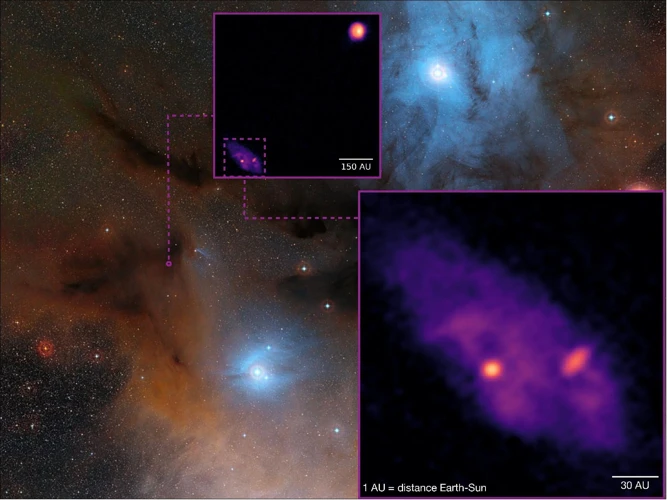
As technology continues to advance and our understanding of the cosmos deepens, the future of planetary alignment research looks promising. Scientists and astronomers are constantly striving to uncover new connections and phenomena related to this celestial event. Here are some aspects that hold great potential for future research:
- Advancements in Technology and Data Collection: With the advent of powerful telescopes and advanced imaging techniques, researchers will have access to more accurate and detailed data on planetary alignment. High-resolution images, precise measurements, and comprehensive spectroscopic data can provide valuable insights into the mechanics and dynamics of planetary alignment.
- Exploring Uncharted Connections and Phenomena: Planetary alignment research can expand beyond its current scope by investigating potential connections between celestial events and other natural phenomena. By collaborating with experts from various scientific disciplines, researchers can explore correlations between planetary alignment and occurrences such as weather patterns, geological activities, or biological cycles.
With these advancements, future studies may reveal previously unknown aspects of planetary alignment, further deepening our understanding of the cosmos and its intricate workings. The mysteries of planetary alignment continue to captivate our imagination, and future research endeavors hold the promise of unveiling even more astonishing revelations about this celestial phenomenon.
Advancements in Technology and Data Collection
In recent years, advancements in technology and data collection have revolutionized the study of planetary alignment. Astronomers now have access to powerful telescopes equipped with advanced imaging capabilities, allowing them to observe and document planetary alignments with greater precision and detail.
One significant advancement is the development of space-based telescopes, such as the Hubble Space Telescope or the Kepler Space Telescope. These telescopes orbit the Earth, free from the distortions caused by the Earth’s atmosphere, providing astronomers with clearer and sharper images of celestial objects. The data collected by these space telescopes have greatly contributed to our understanding of planetary alignments and their connection to other astronomical events.
Additionally, the use of computer modeling and simulation has played a vital role in analyzing and predicting planetary alignment patterns. Complex algorithms and mathematical models have been developed to simulate the movements and interactions of the planets, allowing scientists to accurately predict future alignment events. This computational approach has helped astronomers plan and carry out targeted observations to gather data during significant alignments.
Advancements in data collection techniques have allowed astronomers to gather a wealth of information during planetary alignments. Spectroscopic analysis, for example, enables scientists to study the composition and properties of the planets and other celestial objects during alignment events. By analyzing the light emitted or absorbed by these objects, astronomers can gain valuable insights into their atmospheric conditions, chemical composition, and even the presence of exoplanets.
These advancements in technology and data collection have significantly enhanced our understanding of planetary alignment. They have provided astronomers with the tools and resources needed to study this phenomenon in greater detail, uncovering new discoveries and deepening our knowledge of the cosmos.
Exploring Uncharted Connections and Phenomena
Exploring uncharted connections and phenomena related to planetary alignment opens up a world of possibilities for astronomers and researchers. While the basics of planetary alignment have been studied and understood to some extent, there are still many unexplored avenues and unanswered questions.
One intriguing area of research involves the potential influence of planetary alignment on Earth’s climate and geological events. Some scientists propose that the gravitational forces exerted during alignment could affect the Earth’s tectonic plates, potentially leading to an increase in seismic activity such as earthquakes and volcanic eruptions.
Another uncharted connection lies in the realm of astrology. Astrologers believe that planetary alignment can have a profound impact on human behavior and destiny. They associate specific traits and influences with each aligned planet, and interpret their alignments as indicators of significant life events and personal characteristics.
Exploring the relationship between planetary alignment and lesser-known celestial phenomena is another promising avenue. For example, researchers have begun investigating the correlation between planetary alignment and the occurrence of rare cosmic events, such as gamma-ray bursts or even the discovery of new astronomical objects.
Advancements in technology and data collection methods are crucial in exploring these uncharted connections and phenomena. With the development of more powerful telescopes, satellite technology, and advanced data analysis techniques, scientists can gather valuable data to correlate with planetary alignment events. This enables them to identify patterns, anomalies, and potential causal relationships.
While the mysteries of planetary alignment continue to capture the imagination, it is through the exploration of these uncharted connections and phenomena that we can further our understanding of the cosmos and our place within it.
Conclusion

In conclusion, the mysteries of planetary alignment continue to captivate and inspire both astronomers and enthusiasts around the world. The celestial dance of the planets, with their intricate paths converging and aligning, has led to a deeper understanding of astronomical events such as eclipses, meteor showers, and comet sightings. The historical significance of planetary alignment is evident in ancient observations and interpretations, while modern-day discoveries and implications shed new light on this enigmatic phenomenon.
Scientific studies have provided observational techniques and data analysis to quantify the impact of planetary alignment, further advancing our knowledge in this field. As technology and data collection continue to improve, future research holds the promise of exploring uncharted connections and phenomena related to planetary alignment.
As we gaze up at the night sky and witness the alignment of the planets, let us embrace the wonder and beauty of the cosmos. The mysteries of planetary alignment remind us of the vastness of the universe and the never-ending quest for knowledge. So, whether you’re an astronomy enthusiast or simply curious about the wonders of the universe, take a moment to appreciate the magic and intrigue of planetary alignment.
Frequently Asked Questions

1. Can planetary alignment cause earthquakes?
There is no scientific evidence to support the claim that planetary alignment directly causes earthquakes. Earthquakes are primarily the result of tectonic plate movements and the release of accumulated stress in the Earth’s crust.
2. How often does planetary alignment occur?
Planetary alignment occurs regularly in our solar system. The alignment of the inner planets can happen every few years, while the alignment of the outer planets is less frequent, occurring every few decades.
3. Is planetary alignment a rare phenomenon?
While the alignment of all planets in a perfectly straight line is rare, the occurrence of planetary alignment itself is not uncommon. Depending on the planets involved, alignment can happen several times within a decade.
4. Can planetary alignment be seen with the naked eye?
Yes, planetary alignment can often be observed with the naked eye. However, the visibility and clarity of the alignment depend on factors such as the positions of the planets, the time of day, and the location of the observer.
5. Does planetary alignment have any astrological significance?
Astrologers believe that planetary alignment can have symbolic and energetic meanings that influence human behavior and events on Earth. However, from a scientific perspective, there is no empirical evidence to support these claims.
6. Can planetary alignment affect the weather?
While planetary alignment may have subtle influences on the overall dynamics of the solar system, there is no substantial evidence to suggest that it directly affects weather patterns on Earth.
7. Are there any cultural or mythological interpretations of planetary alignment?
Yes, various cultures throughout history have ascribed different meanings and interpretations to planetary alignment. For example, Hindu mythology associates planetary alignment with the creation story, while African cultures have their own creation mythologies that involve celestial alignment.
8. What is the significance of planetary alignment in space exploration?
Planetary alignment plays a significant role in space exploration, as it allows scientists to plan missions more efficiently by taking advantage of alignment patterns to optimize spacecraft trajectories and fuel consumption.
9. Can planetary alignment be predicted in advance?
Yes, scientists can predict planetary alignments well in advance using complex mathematical calculations based on the known orbits and positions of the planets in our solar system.
10. How does gravitational pull contribute to planetary alignment?
Gravitational forces between celestial objects, such as the Sun and planets, play a role in the alignment process. These gravitational interactions help shape the paths and positions of the planets, leading to the phenomenon of planetary alignment.
References
Frequently Asked Questions

FAQ 1: What is planetary alignment?
Planetary alignment refers to the phenomenon when two or more planets appear in a relatively straight line in the sky as observed from Earth. This alignment can occur in various configurations, such as a planetary conjunction or opposition.
FAQ 2: How does planetary alignment occur?
Planetary alignment occurs due to the combined effect of the planets’ orbital paths around the Sun and their relative positions in the solar system. It is influenced by the gravitational forces between the planets and the Sun.
FAQ 3: Can planetary alignment cause significant changes on Earth?
The effects of planetary alignment on Earth are still a topic of scientific debate. While some believe that it can influence natural phenomena like tides and weather patterns, others argue that the gravitational forces involved are too weak to have a noticeable impact on Earth.
FAQ 4: Are there specific astronomical events associated with planetary alignment?
Yes, planetary alignment can coincide with various astronomical events, such as eclipses, meteor showers, and comet sightings. These events often occur when the alignment results in the planets being in close proximity to each other or to Earth.
FAQ 5: How do eclipses relate to planetary alignment?
Eclipses occur when the alignment of the Sun, Moon, and Earth is such that one celestial body casts a shadow on another. Planetary alignment can contribute to this alignment, increasing the likelihood of solar or lunar eclipses.
FAQ 6: What is the connection between meteor showers and planetary alignment?
The debris that causes meteor showers is often associated with comets or asteroids. Planetary alignment can result in the Earth passing through the debris field, leading to an increased number of meteors visible in the night sky during meteor showers.
FAQ 7: Can planetary alignment affect comet sightings?
Yes, planetary alignment can influence comet sightings. When a comet’s orbit brings it close to Earth during a period of alignment, it becomes more visible from our planet. This alignment can enhance the viewing opportunities for astronomers and skywatchers.
FAQ 8: Has planetary alignment always held significance throughout history?
Ancient civilizations attributed great significance to planetary alignment. They believed that it had astrological and mystical implications, associating it with events like royal successions, prophecies, and celestial omens. However, modern scientific understanding differs in its interpretation of these phenomena.
Modern-day observations and research have provided valuable insights into the mechanics and effects of planetary alignment. Scientists have discovered correlations between specific alignments and phenomena like solar activity, Earth’s magnetic field fluctuations, and gravitational interactions.
FAQ 10: Are there ongoing scientific studies on planetary alignment?
Yes, research on planetary alignment is still active. Scientists are developing advanced observational techniques and utilizing data analysis to understand the precise dynamics of alignment and its potential impact on various celestial and Earth-related processes.
References
- March’s 5-planet alignment adds new pieces to celestial …
- How to watch a rare 5-planet alignment this weekend
- A stunning lineup of five planets will decorate the night sky

